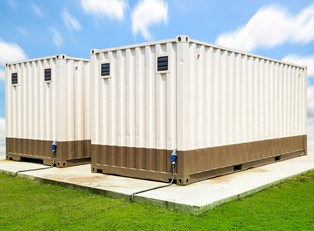It doesn’t matter if you’re in your twenties, your fifties, or retirement age. If you’re drowning in rent bills or mortgage payments, it may be time to consider alternative housing options. Our culture tends to value having our own unique, private living spaces, but there are plenty of people who go without grand private homes and save a ton of money by utilizing alternative options. If you think you’d like to try out an alternative housing option, check out these ideas to see which one might be best for you.
1. Cooperative Living
Many people associate Co-op housing with college students and yuppies (young, urban professionals), but there are actually all kinds of people who join and live in cooperative housing. Typically, co-ops are large houses that are home to multiple individuals and families, depending on how large the dwelling space is. People who join co-ops typically co-own, or co-rent, the space and then agree on how to run the community within the living space. Many co-ops have their residents pay dues in addition to rent in order to supply food and make group meals together.
Co-ops are affordable because they split the cost of renting or owning a house among a group of people. An average co-op has 8-12 people living in the same house. Imagine that the rent and utility bill for the house is $1000 per month and there are 10 people living the house together. That means that each person only ends up paying around $100 a month for housing. Co-operative housing is both cheap and a good optio for people who want to build a community in their living space.
2. Micro Houses
The average size of American homes is around 2,600 ft. Did you know that there’s currently a movement of people who are building tiny “micro” sized homes in order cut down on housing costs while living a simpler lifestyle? Tiny homes are between 100 and 400 square feet and seek to optimize space so it can be used efficiently. Many owners of tiny homes are building their own homes for under $30,000 in total or even buying a tiny home from factories and companies that are catching onto the movement.
A tiny house design is usually left up to the owner. Because so many people are building their own tiny homes, they seek to design their homes in the most modern and efficient ways possible. While tiny homes seem like they cost quite a bit up front, the overall cost of the home is significantly cheaper than the cost of a traditional home. After mortgage fees and maintenance fees, many people spend over a million dollars on their average-sized home over the course of their lifetime. Investing in a tiny home may mean you ultimately pay just 10 percent of the average cost over your lifetime.
3. Shipping Container Homes
People have also started using shipping containers as a way to cut down on their housing costs while trying to live more sustainably. Shipping containers are large, steel storage boxes that are used to ship materials via train or freight ships. Companies stop using shipping containers after they’ve depreciated, so people have found ways to buy shipping containers for around $2,000 and recycle them into building materials. Because shipping containers are made of steel, they’re an ideal architectural structure to build a house.
Shipping container homes, like tiny houses, allow people to cut down on the cost of building a house by using sustainable materials. However, shipping containers allow individuals to have a bit more space their tiny houses allow. Some people use 10 or more shipping containers to build an average-sized house.
4. Modular Homes
If you’re looking to build a home but you’d like something a bit more traditional than shipping container homes or tiny house, you should consider getting a modular home. Modular homes are prefabricated homes that are made in factory settings and transported to the site of placement. Modular homes aren’t mobile homes; they’re simply made in a factory before being moved to the foundation. Confusing, right?
Modular homes cut down costs because they save 75% of the time it takes to build a traditional home and cuts down on 20% of the material costs it takes to build a traditional home. Thus, modular homes save you money and time. However, if you’re the kind of person who can barely afford this month’s rent, you may want to think of a modular home as a future goal rather than a current option.
5. Roommates or Co-living
Another option for renters looking to cut-down on costs is to find roommates or a co-living situation. It’s easier than ever to find roommates through sites like Roommates.com, but many couples and families rule out utilizing roommates because they think it’s only for single, independent people. However, there are plenty of families and couples who are choosing to find co-living situations. Co-living is essentially the same idea as having a roommate, except it may be more like two families or two couples who are sharing the same space. These options are great for people who want to have fewer housemates than they would in a co-operative environment but would still like to be able to split costs with other people.



